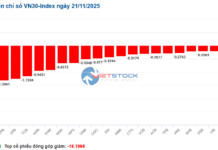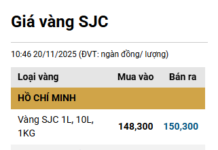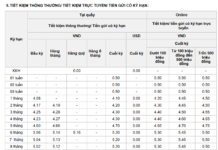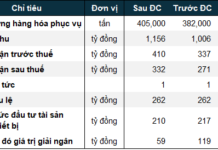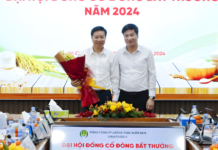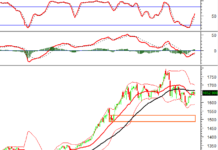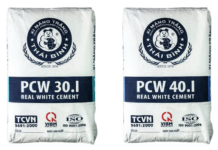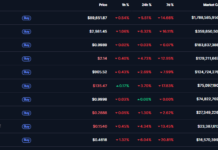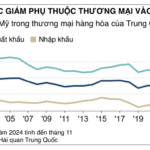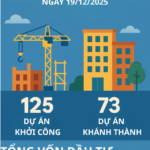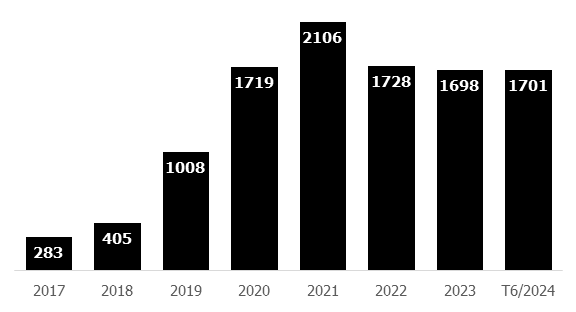On August 1st, the Ministry of Industry and Trade announced that the White House had posted a presidential decree from Donald Trump regarding the adjustment of retaliatory tariffs. The decree, which takes effect on August 7th, lowers the tax rate on Vietnamese goods from 46% to 20%. However, for goods already loaded on ships and en route, or cleared through customs before 12:01 am on October 5th, 2025, the previous tax rate from Proclamation 14257 will still apply.
Tran Huu Hau, vice secretary-general of the Vietnam Cashew Association, commented that while the 20% tax rate is still high, it is a positive sign for Vietnamese exports, especially considering the significant reduction from the initially proposed 46%.
For over a decade, the US has been the largest export market for Vietnamese cashews, accounting for approximately 25-27% of total exports. Previously, this product was exported to the US with a preferential tax rate of 0%. The increased tax rate will undoubtedly make Vietnamese goods more expensive and less competitive in the US market. However, in response to this development, the Cashew Association has been working with businesses to find alternatives and explore new potential markets to compensate for the expected decline in exports to the US.
“Cashew businesses will immediately adjust their export plans, with a focus on the Middle East and Central Asian markets. There will also be a stronger push to expand into new markets,” said Hau.

The cashew industry is planning to expand into new markets in the near future. (Photo: VnEconomy)
“The Middle East is a large market that the cashew industry has not fully tapped into yet. We will now shift our focus to this region to boost exports and make up for the loss in exports to the US,” Hau added. “The industry will also continue to focus on deep processing to get our products directly onto the shelves of retailers. With these strategies, the Vietnamese cashew industry still has the opportunity to stabilize.”
Meanwhile, Ngo Sy Hoai, vice president and secretary-general of the Vietnam Timber and Forest Product Association, expressed hope that the two countries would continue negotiations to further reduce tariffs. “Businesses certainly hope that the US’s tariff policy towards Vietnam will be further adjusted through negotiations in the near future,” said Hoai.
However, Hoai also provided an update: starting April 8th, wood and wood products exported to the US are subject to investigation under Section 232 of the US Trade Expansion Act of 1964. Therefore, the industry will have to wait for the investigation’s conclusion instead of relying on retaliatory tariffs. This presents a challenge for the wood industry, as the US accounts for over 50% of Vietnam’s total wood exports.
“Higher tariffs will reduce American consumers’ purchasing power. We hope the US will adopt flexible policies to encourage Vietnamese businesses to increase imports of roundwood from the US and boost exports of wood and wood products to the US,” Hoai stated.
Many experts also expressed confidence in further negotiation opportunities between the US and Vietnam for specific industries. Additionally, as the US continues to build and refine its sustainable supply chains, Vietnam remains a highly regarded partner, offering stability and peace of mind.
Economist Nguyen Minh Phong noted that the 20% retaliatory tariff is a result of trade negotiations between Vietnam and the US at both the technical and ministerial levels. This development allows businesses to breathe a sigh of relief and adjust their strategies accordingly.
“Vietnamese businesses should accept this tax rate as a given and adapt their import-export strategies accordingly,” Phong advised. He suggested two courses of action: proactive negotiation and cost adjustment to minimize losses and compensate for reduced profits.
Sharing this view, Le Dang Doanh, former director of the Central Institute for Economic Management, agreed that the reduction from 46% to 20% is positive. However, he pointed out that this rate is still significantly higher than previous levels and higher than the rates applied to some regional countries, creating challenges for Vietnamese businesses exporting to the US.
“To ease these difficulties, businesses should cut unnecessary costs, enhance competitiveness, and continuously expand their markets. At the same time, we must persist in negotiations to further lower the tariff rate, possibly for key industries,” Doanh emphasized.
According to US Customs data, in 2024, two-way trade between Vietnam and the US reached 149.7 billion USD. Vietnam exported 136.6 billion USD worth of goods and services to the US and imported 13.1 billion USD. Vietnam’s trade surplus with the US was 123.5 billion USD, ranking third among countries with the largest trade surpluses with the US, after China and Mexico.
In the first five months of 2025, two-way trade between Vietnam and the US reached 77.4 billion USD, an increase of 36.5% compared to the same period in 2024. Vietnam’s exports to the US reached 71.7 billion USD (up 37.3%) and imports from the US reached 5.7 billion USD (up 30.7%). Vietnam’s trade surplus with the US was 64.8 billion USD (up 29%), ranking fourth among countries with the largest trade surpluses with the US, after China, Mexico, and Iceland.
“What’s Next for the Stock Market in August After Hitting a New Peak?”
The Vietnamese stock market, after a robust rally and hitting new highs in late July, is expected to remain promising in August, according to experts. However, investors should brace for more frequent bouts of volatility and turbulence.
China’s Trade Dependence on the US Plunges to a New Low
“This development comes as Beijing braces for the possibility of tariffs being imposed by U.S. President-elect Donald Trump when he assumes office on January 20th. With Trump’s return to the White House, there is anticipation and concern over potential new trade policies that could significantly impact China’s economy.”
Trump’s Tough Talk Leaves EU in a Bind: “Buy More American Energy or Face Higher Tariffs”
Former US President Donald Trump has threatened to impose tariffs on the European Union if its member states do not increase their purchases of American oil and natural gas. In a characteristic display of his aggressive trade policy approach, Trump is demanding that the EU boost its imports of US energy resources or face economic consequences. This bold ultimatum underscores Trump’s unwavering commitment to protecting and promoting American economic interests on the global stage.
What Are the Prospects of the U.S. Recognizing Vietnam as a Market Economy?
Experts expressed concern over the new U.S. policy direction, offering recommendations and solutions to businesses at the Vietnam – U.S. Cooperation Forum on the morning of December 6th.

